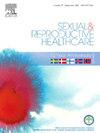重度月经出血的生活质量测量工具:系统回顾和关键评价
IF 1.7
3区 医学
Q3 PUBLIC, ENVIRONMENTAL & OCCUPATIONAL HEALTH
引用次数: 0
摘要
目的建立准确可靠的重度月经出血(HMB)特异性生活质量(QoL)指标,全面评估重度月经出血对患者的影响及治疗效果。我们系统地回顾了已发表的HBM疾病特异性生活质量评估工具,以评估其方法学质量。方法我们检索PubMed和EMBASE,检索到2024年3月,并检索PROQOLID数据库和参考文献列表,以报告成年女性HMB特异性生活质量仪器的开发或验证。我们根据COSMIN清单对它们进行了评估。我们对工具的方法质量进行评分,以提出在实践中使用的建议。结果我们共检索到2621条引用,纳入了17项研究,报告了10种HMB特异性QoL工具的开发和验证。所有的研究都是在美国和西欧进行的,除了一项研究外,其他研究都有英文版本。3种工具为数字格式,7种为纸质格式(7/ 10,70 %)。QoL工具项目的中位数为21(范围3-72),7/10(70%)工具的召回期为1-3个月。总体质量为中低,没有一种工具满足临床实践中推荐的所有COSMIN要求。UFS-QOL和SAMANTA工具在有效性、响应性和可解释性方面表现出较高的质量,但需要进一步验证。结论现有的HMB质量评价工具均不适合临床应用。有必要投资于开发和验证提供高质量定性和定量评估的可靠工具。本文章由计算机程序翻译,如有差异,请以英文原文为准。
Quality of life measurement tools for heavy menstrual bleeding: A systematic review and critical appraisal
Objectives
Accurate and reliable heavy menstrual bleeding (HMB) specific quality of life (QoL) tools can offer a holistic assessment of HMB impact and response to treatment. We systematically reviewed published disease-specific QoL assessment tools for HBM to assess their methodological quality.
Methods
We searched PubMed and EMBASE until March 2024 complemented by a search of PROQOLID database and reference lists for studies reporting on the development or validation of HMB specific QoL instruments for adult women. We assessed them against the COSMIN checklist. We scored tools for their methodological quality to make recommendations for use in practice.
Results
We identified 2621 citations and included 17 studies reporting on the development and validation of 10 HMB specific QoL tools. All the studies were conducted in the USA and western Europe, and all were available in the English language except one. Three tools were in digital format, while seven were in paper format (7/10, 70 %). The median of QoL tool items was 21 (range 3–72) with a recall period of 1–3 months in 7/10 (70 %) tools. The overall quality was low to medium and none of the tools met all the COSMIN requirements to be recommended in clinical practice. The UFS-QOL and SAMANTA tools showed high quality for validity, responsiveness and interpretability but require further validation.
Conclusion
None of the available QoL tools for HMB are appropriate for use in practice. There is a need to invest in developing and validating reliable tools that offer high quality qualitative and quantitative assessment.
求助全文
通过发布文献求助,成功后即可免费获取论文全文。
去求助
来源期刊

Sexual & Reproductive Healthcare
PUBLIC, ENVIRONMENTAL & OCCUPATIONAL HEALTH-
CiteScore
2.70
自引率
5.60%
发文量
73
审稿时长
45 days
 求助内容:
求助内容: 应助结果提醒方式:
应助结果提醒方式:


